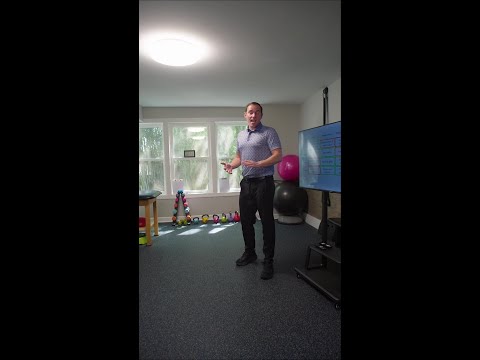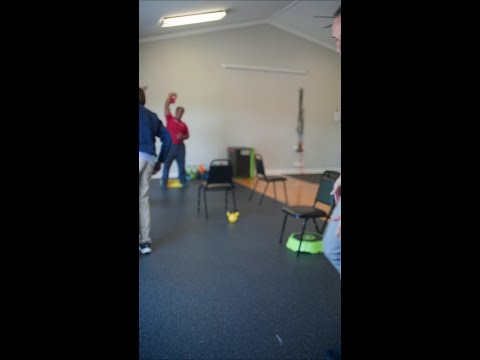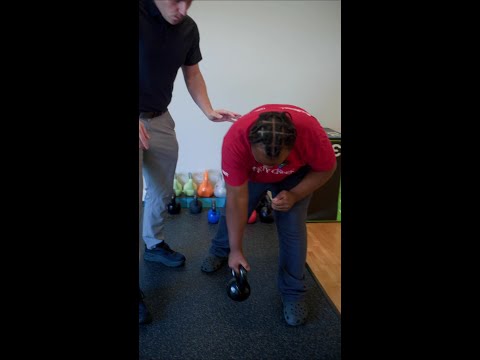Post-concussion headaches and migraines are among the most frustrating symptoms young athletes face after a sports injury. Even when MRIs and other imaging show no structural damage, the lingering effects can disrupt school, sports, and daily life. At Active Sports Therapy in Hendersonville, Tennessee, we guide families through recovery. Our approach uses evidence-based testing and rehabilitation focused on restoring every system affected by concussion.

Alyssa’s Story, When a Routine Soccer Game Turns Serious
Alyssa is an eleven-year-old soccer player who recently experienced a severe blow to the head during a match. Her own goalkeeper went to clear the ball from five feet away, striking her directly. She lost consciousness briefly, and when she woke, she was crying, disoriented, and exhausted. Her mother, who had been out of town at a tournament, rushed home. She found Alyssa fatigued, light-sensitive, and in pain.
During her evaluation at Active Sports Therapy, we found signs of neck strain and mild neurological fatigue. Visual testing showed a single beating nystagmus when she looked to one side, an early clue that her visual system was struggling. Her balance was reduced, light sensitivity was high, and her ability to recall information was delayed. She missed school the following Monday due to fatigue and headaches. These are all signs of post-concussion symptoms that needed close monitoring.
Understanding SCAT6 and SCOAT6, The Modern Gold Standards
In sports medicine, concussion evaluation follows two consensus-based standards, the SCAT6 (Sport Concussion Assessment Tool, 6th edition) and the SCOAT6 (Sports Concussion Office Assessment Tool). The SCAT6 is used immediately after injury, typically on the sideline or within the first few days. It includes rapid cognitive, balance, and visual assessments. The SCOAT6, on the other hand, is a more thorough office-based version. It is designed for post-injury follow-up and ongoing monitoring of recovery.
Both tools were developed by the world’s leading concussion experts. They continue to evolve through global consensus meetings. At Active Sports Therapy, we rely on the SCOAT6 as part of our detailed in-office evaluation. We ensure that no system—neck, vision, vestibular, or cognitive—is overlooked. Learn more from the Consensus Statement on Concussion in Sport, 6th Edition.
What Really Happens in a Concussion
Concussions are not caused by bruising of the brain tissue but by rapid acceleration and deceleration forces. When the head moves suddenly, the brain shifts within the skull. This creates a chemical reaction that temporarily disrupts normal brain function. This is why symptoms like dizziness, confusion, and fatigue can occur even when imaging appears normal.
The good news is that the body heals a concussion naturally. Our role is to address the lingering and measurable symptoms that remain after the initial injury. This includes things like balance loss, neck stiffness, visual delay, or reduced concentration. As noted by the Centers for Disease Control, gradual recovery and careful supervision are key to preventing long-term complications.
The Key to Safe Recovery, Preventing Second Impact Syndrome
The most critical risk in concussion management is returning to activity too soon. Second Impact Syndrome occurs when a second concussion happens before the first has fully healed. That’s why symptom-free clearance is essential. When athletes take medications like NSAIDs or migraine suppressants, they may unintentionally mask persistent symptoms. This creates a false sense of recovery.
Based on sixteen years of clinical experience and the latest consensus data, Dr. Hulme’s philosophy is clear. During return-to-play testing, no symptom-masking medications should be used. This ensures that the brain’s response to graded exercise is genuine, confirming true recovery and readiness for competition.
How Active Sports Therapy Evaluates Post-Concussion Symptoms
Our comprehensive post-concussion evaluation follows a four-part system designed to measure and rehabilitate every area impacted by the injury:
- Cervical spine evaluation: We begin by ruling out neck fractures or sprains. Many post-concussion headaches originate from the cervical spine, and restoring mobility safely is essential.
- Visual and oculomotor testing: We assess visual tracking, saccades, and accommodation. We ensure both eyes move smoothly and react appropriately to visual cues.
- Vestibular and balance testing: Using graded exercises, we retrain the brain’s coordination with the inner ear and body. This helps reduce dizziness and instability.
- Cognitive and memory assessment: Through recall and coordination drills, we monitor how quickly the brain processes information. We also check how it adapts to increasing stimuli.
Active Sports Therapy has been video-recording movement and neurological evaluations since 2012. This allows our clinicians to re-measure progress with precision and transparency. Each system—neck, visual, vestibular, and cognitive—is retested regularly to ensure complete resolution before returning to school or sport. You can learn more about our methods in our article on rehabilitative exercise and lasting results.
When to See a Pediatrician, Neurologist, or Chiropractor
Many parents ask if their child must see a pediatrician or neurologist after a concussion. The answer depends on severity and context. If clearance for return-to-play is required under TSSAA guidelines, we coordinate with your pediatrician. We share all SCOAT6 documentation for your child’s permanent record.
CT scans are typically reserved for emergency situations when there is a concern for bleeding or skull fracture. For mild concussions without red flags, rest, monitoring, and gradual reactivation are the safest approach. We frequently collaborate with Dr. Jeff Kindred, a primary care sports medicine physician, for additional medical clearance when needed.
If symptoms worsen instead of improving, having medical professionals like your athletic trainer or chiropractic sports physician monitor progress is vital. Active Sports Therapy maintains a strong referral network. This ensures patients can be seen quickly by specialists if their condition changes.
Why Early Rehabilitation Matters
One of the most common lingering effects of concussion is neck weakness, particularly in the deep neck flexors. While it’s unclear whether this weakness precedes or follows the concussion, it contributes to prolonged symptoms if left unaddressed. We use strengthening and coordination exercises to restore neck stability and overall confidence in movement.
Some mild concussions do resolve on their own within two to three weeks without intervention. However, for athletes who continue to struggle with headaches, dizziness, or poor concentration, targeted rehabilitation dramatically improves outcomes. Research from the NIH on vestibular and visual dysfunction supports this approach, highlighting the importance of early retraining in recovery.
Real Recovery, A Local Success Story
One of the most rewarding recoveries we’ve seen involved a local writer’s daughter. She suffered seven concussions between ages eight and eleven. She developed severe migraines and was placed on multiple medications that left her overly sedated. After beginning post-concussion rehabilitation at Active Sports Therapy, we focused on reconditioning her neck, vision, and balance systems. Within months, she was off all medications and returned to full activity. Now a high school junior, she’s thriving on her cheerleading team, headache-free and confident.
Helping Young Athletes Return Safely and Stronger
Every concussion is unique, but recovery always follows the same principle. The body heals, and our job is to support every step. At Active Sports Therapy, our mission is to ensure no symptom is left unresolved so athletes can return to their sport safely, symptom-free, and stronger than before.
Ready to get started? Book your appointment online or visit our contact page to schedule a consultation for your athlete today.
FAQ
What is post-concussion syndrome?
It’s when symptoms like headaches, dizziness, or fatigue last longer than expected after a concussion.
What are SCAT6 and SCOAT6?
They are the latest international tools for concussion assessment, SCAT6 for on-field evaluation and SCOAT6 for office-based follow-up.
Can my child return to sports if they still have mild headaches?
No, athletes should be completely symptom-free without medication before returning to play.
When should a CT scan be ordered?
Only when emergency signs like vomiting, worsening headaches, or neurological changes suggest a possible brain bleed.
What does concussion rehabilitation involve?
Neck therapy, balance and vestibular training, visual retraining, and gradual cardio conditioning under professional supervision.



